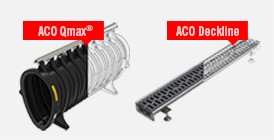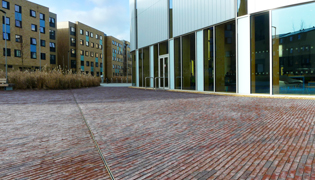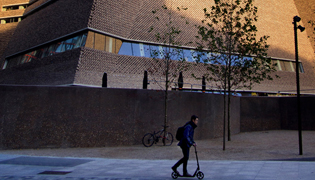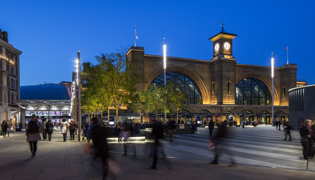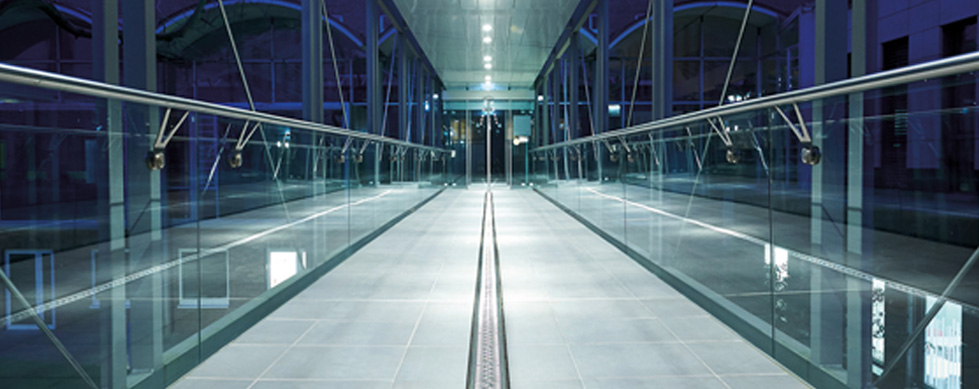
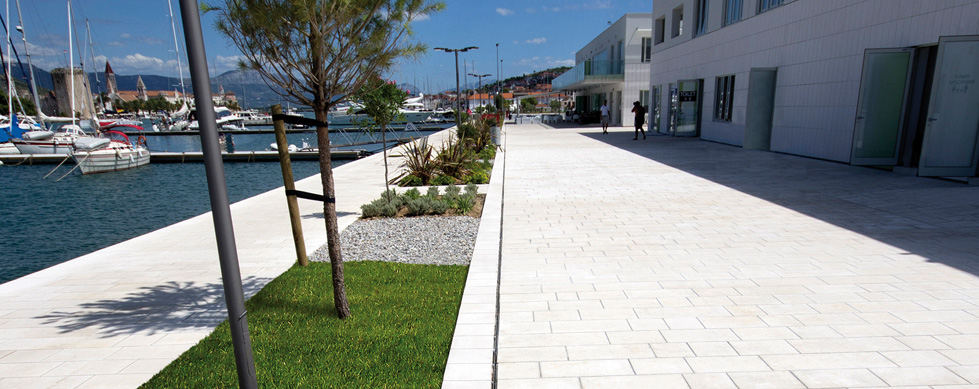
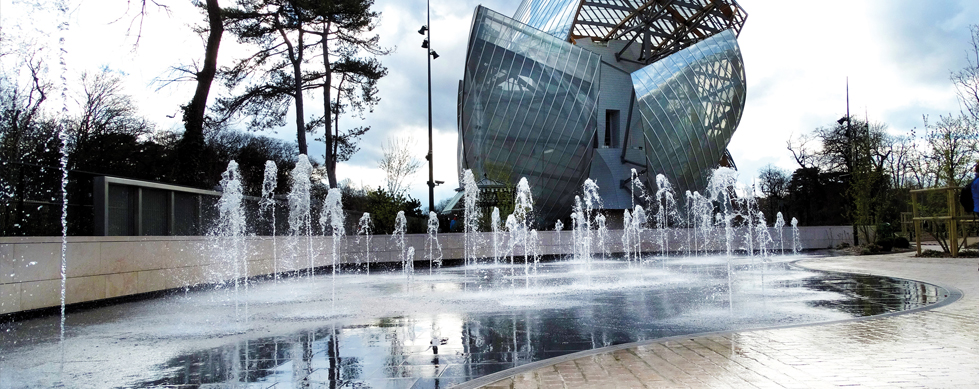
Urban surface design
Aesthetics - lines and designs
The term ‘line’ typically relates to structures within a landscape - the edges of footpaths or flower beds and how they link with open space; in domestic environments it references things like the perimeter of a patio or deck. It is generally accepted that the way line is utilised will critically influence the flow of any landscape, not least in the urban environment. Straight lines and hard angles create a formal look, while curved lines tending to create a more informal appearance. Vertical lines can be used to pull the eye up and make a space feel larger, while horizontal lines make a space feel bigger by pulling the eye along the ground, something frequently achieved using line drainage.
In design terms, linear drainage can be as interesting as any other “element” that might go into a project; it is just that it sits in the surround of the building rather than in the building itself. New sustainable drainage guidance means that there is even more reason to invest time in thinking about the way water is managed and conveyed and how ‘space’ can be utilized more effectively as the natural drainage medium.
Detail of grating surface pattern is also very significant and plays a part in aesthetics as well as function. There are numerous different forms of grating; traditional iron slot ranges are complemented by similar solutions with more sophisticated design detail, from wave patterns to mosaic designs, thereby combining form and function to good effect.
Ductile iron intercept gratings are designed to manage surface flow in a particularly positive manner, the same form of grating being available in galvanized steel, giving designers flexibility to deliver specific features in a variety of materials.
In many instances there are design options and alternatives, for example where intercept solutions are required in lower load situations, stainless steel wedge wire gratings or Brickslot gratings could be used as an alternative to the ductile iron intercept version.
The breadth of range includes products like the Mesh gratings that are ideal in situations where high levels of inflow are required or where there are particular hygiene requirements and the perforated grating for situations where very small inlet detail is required.
The extensive range is made even greater with the ACO Freestyle offering that enables designers to create bespoke solutions, or stainless steel solutions that can be designed specifically for any given project – in straight lines or in a radius.
*A Pattern Language - Christopher Alexander, Murray Silverstein, and Sara Ishikawa
Our Design Team
Collaboration is very much a part of ACO’s way of working. For over 50 years we have been offering creative design solutions to all sectors of government, public and private enterprise and have a track record for development and regeneration informed by community aspirations and environmental context. Our in house design team and our external design engineers have excellent technical understanding of interconnected systems that can help you create sustainable drainage solutions in all categories of the urban environment.
Tools to support you
We also offer software for design surface to assist you in making your own calculations, as well as design visualisers to assist in helping assess impact of various grating/inlet details. BIM product files along with a variety of other support documents are all available for download here.
